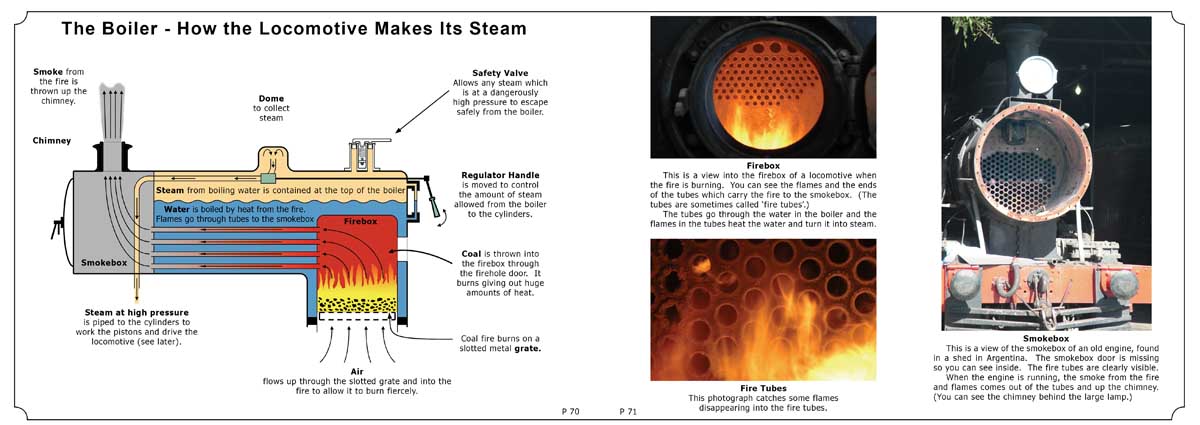How it works

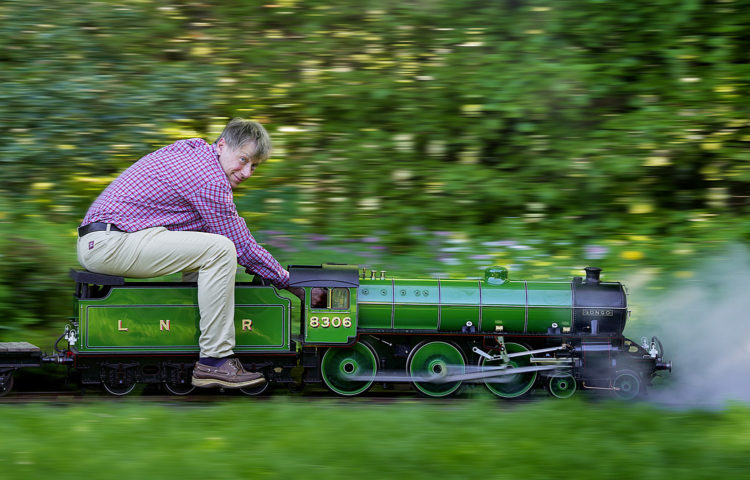
The six hardback books contain loads of information on how trains work. Not just the locomotive itself, but track, wagons, points, bearings and much more….
The unique thing about the books is that they contain both stories and simple-but-accurate (Chris is a professional engineer!) technical pages at the ends of chapters. For samples of the how-it-works pages, just scroll down: They are the pages which explain how the boiler makes the steam and how the pistons use the steam to turn the wheels to pull the train.
The picture shows “The Author at Speed” on the miniature railway on which the books are based.
Buy books from the Hardback Series NowThis pair of simple-but-accurate technical pages explains how the engine makes steam. (From Peter’s Railway – book 1.)
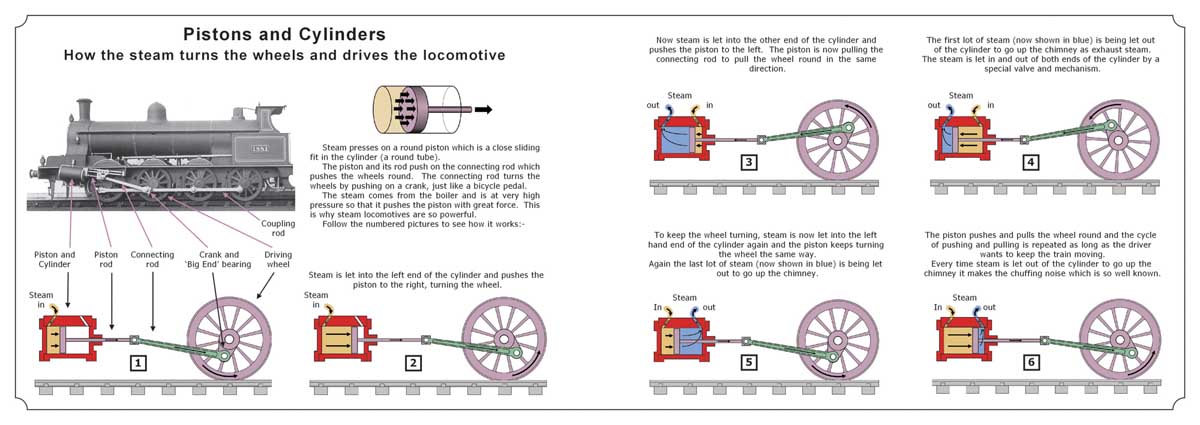
This pair of technical pages explains how the cylinders use the steam to power the locomotive
A short video clip with Chris explaining the moving parts of a steam locomotive. (Bongo is Fiery Fox in the books.)
After many requests, we have produced a large banner/poster, explaining how a steam engine works.
For more information or if you would like to buy one for your school, museum, railway or for home! please click here.
The ideas and things explained in the hardback books are:

Peter’s Railway, (Book 1 hardback series)
Why railways don’t have steep hills? How a spirit level works; How track is constructed, including how the joints allow the rails to expand on hot days; How the wheels keep the train on the tracks; Couplings and buffers; How the boiler makes the steam; How the steam is used to drive pistons and turn the wheels to pull a train. At the end of the book is a glossary of special words which have been used in the book. Find out more about Peter’s Railway Book 1
The Beginning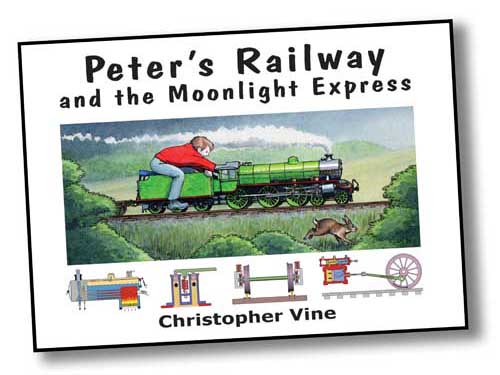
The Moonlight Express, (Book 2)
The boiler with its safety valves and water gauge; Wheel arrangements for locomotives; Points; Turntables and ball bearings; Turning loop to turn the trains: More on pistons, cylinders and valves. Special Words – glossary. Find out more about Peter’s Railway and the Moonlight Express (Book 2)
The Moonlight Express
The Forgotten Engine, (Book 3)
Brakes; Fail Safe principle; Gears and gear ratios; Pressure gauge; Traction engine; Drive belts; Governor; Saving steam and coal. Special Words – glossary. Find out more about Peter’s Railway and the Forgotten Engine (Book 3)
The Forgotten Engine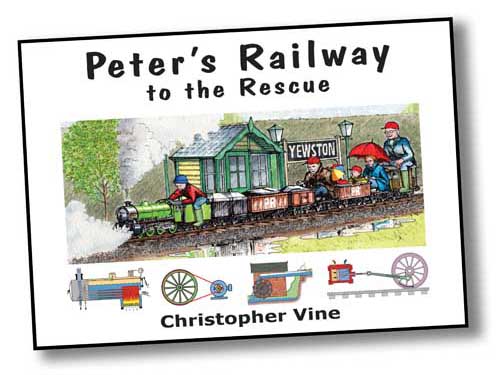
To the Rescue, (Book 4)
Snow plough; Ice and why it floats and bursts boilers; Electricity, lamps and switches; Watermill; Energy and power; Electric motor and generator; Driving a locomotive; Boiler and cylinders. Special Words – glossary. Find out more about Peter’s Railway to the Rescue (Book 4)
To the Rescue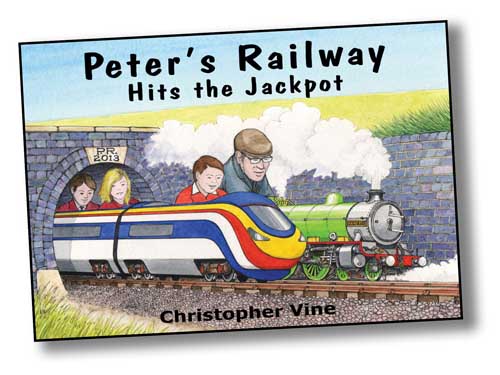
Hits the Jackpot, (Book 5)
Energy useage and fuel consumption; Electricity supply to trains; Area, volume and scaling to different sizes; Tunnel boring; Bridge construction; Brakes, friction and regenerative brakes to save energy; Business Studies!! Find out more about Hits the Jackpot (Book 5)
Hits the Jackpot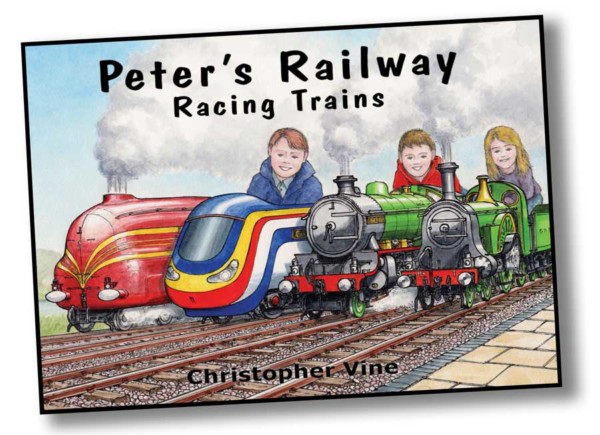
Racing Trains, (Book 6)
Mechanical work, power and speed; friction; coupling rods; soldering; computer used to make a speedometer; Stephenson’s Rocket’s special boiler; French AGV speed record and power used; aerodynamic drag force and relation to speed; electric current (amps) and voltage; electrical power; horsepower, kilowatts and megawatts! Find out more about Racing Trains (Book 6)
Racing Trains
The paperback books
The paperbacks concentrate on one aspect, either a railway story or a technical story.
Of course the level of detail is less in the small books but they still mix stories with science & engineering.
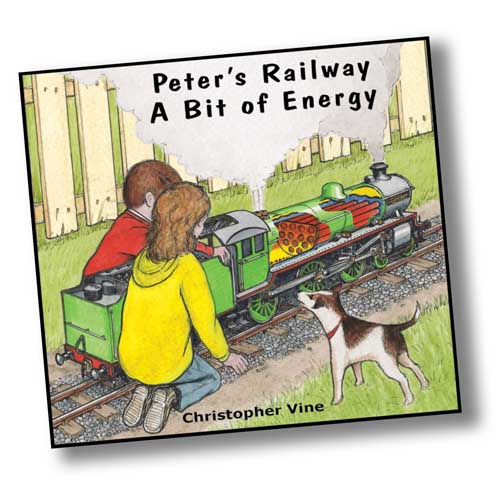
A Bit of Energy. A technical story book.
One day when they are having a steam up on the farm railway, one of the visiting children asks where all the energy comes from to make the engine work. This seems quite a simple question, but in the answer a lot of science is explored: Heat, coal, mechanical energy, but where does the coal get its energy from…….. Paperback with 32 pages.
Find out more about A Bit of Energy
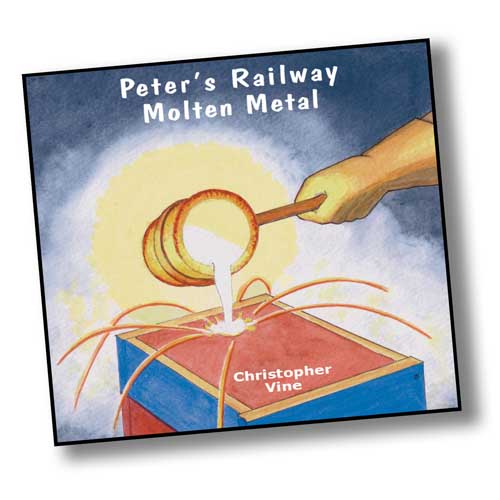
Molten Metal
When Peter is given an old electric scooter, the motor and battery are used to make a new electric locomotive. This is handy because it can run instantly, whereas Fiery Fox takes at least an hour to get up steam. Quite a wide range of engineering topics are covered, including making castings by melting scrap iron, making the mould from sand and machining the rough castings in the lathe to finish them. Paperback with 32 pages.
Find out more about Molten Metal
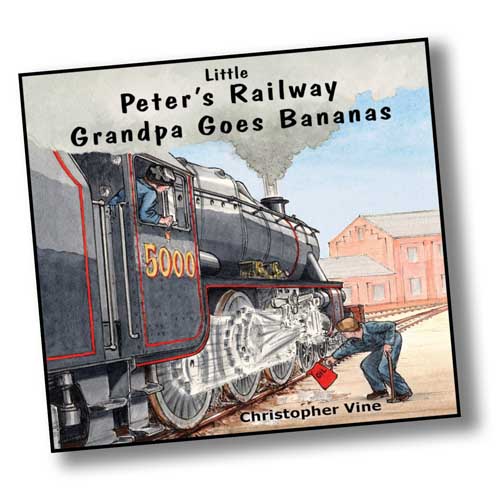
Grandpa Goes Bananas
Although this is one of the “Little” books for younger readers, there is still plenty of engineering going on, wrapped up in a fun story! Grandpa and the children decide to get an old steam locomotive working in a museum one night: while enjoying the story, the reader learns about filling the boiler with water, lighting the fire, raising steam. Then there is information about using oil to reduce friction so that the locomotive doesn’t take off through the wall of the museum! Paperback with 32 pages.
Find out more about Grandpa Goes Bananas
Sign up to receive our newsletter
Early access to new releases, fun activities & more!

